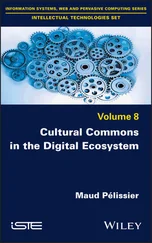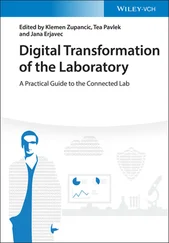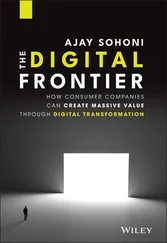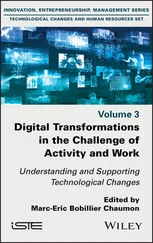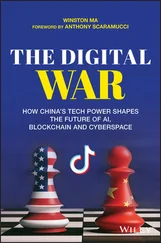1 Cover
2 Series Page IEEE Press 445 Hoes Lane Piscataway, NJ 08854 IEEE Press Editorial Board Ekram Hossain, Editor in Chief Jón Atli Benediktsson David Alan Grier Elya B. Joffe Xiaoou Li Peter Lian Andreas Molisch Saeid Nahavandi Jeffrey Reed Diomidis Spinellis Sarah Spurgeon Ahmet Murat Tekalp
3 Title Page The Digital Transformation of Logistics Demystifying Impacts of the Fourth Industrial Revolution Edited by Mac Sullivan Johannes Kern IEEE Press Series on Technology Management, Innovation, and Leadership
4 Copyright Page
5 List of Contributors
6 Author Biographies
7 Foreword
8 Acknowledgments
9 A Note from the Series Editor
10 Section I: Introduction 1 Demystifying the Impacts of the Fourth Industrial Revolution on Logistics Introduction Current State of the Logistics Industry Navigating a Digital Transformation Foundations of a Digital Transformation Conclusion References
11 Section II: Technologies 2 Technologies Driving Digital Transformation References 3 Logistics Management in an IoT World Introduction Logistics Management in an IoT World Means of Connection Get Decisions Get Prepared Conclusion References 4 Additive Manufacturing Introduction AM Supply Chain Evaluation Technologies and Materials Application Scenarios Market and Trends Conclusion References 5 The Role of Robotic Process Automation (RPA) in Logistics Introduction Achieving Operational Excellence RPA: Hype or Realistic Solution Motivating Example: Konica Minolta Using RPA Use Cases for RPA in Logistics Navigating Your RPA Journey Interacting with RPA Conclusion References 6 Blockchain Will Animate Tomorrow's Integrated Global Logistics Systems Introduction The Origins of Blockchain Technology The Potential of Blockchain Technology Blockchain Applications in Logistics Conclusion References 7 Digitalization Solutions in the Competitive CEP Industry – Experiences from a Global Player in China Introduction Challenges in Key Logistics Segments Digitalization Solutions Today E‐Commerce in China and Its CEP Market A New Competitive Environment Digitalization Solutions of the Future Case Study: Enhanced Address Translation Through AI Conclusion Acknowledgements References 8 Understanding the Impacts of Autonomous Vehicles in Logistics Introduction Evolution of AGVs The Automation of Indoor Transport Systems The Automation of Outdoor Transport Systems Drones and Their Use in Logistics Conclusion References 9 Logistics in the Cloud‐Powered Workplace The Cloud Revolution How Software Drives Logistics The Impact of SaaS on Logistics SaaS‐Enabled Value Creation Conclusion References
12 Section III: Platforms 10 Platforms Enabling Digital Transformation References 11 The Digital Transformation of Freight Forwarders Introduction Key Trends That Will Shape the Future Collaboration Is Key Digitalization Impact for White‐Collar Workers The Regulatory Environment Conclusion References 12 International Trade Revolution with Smart Contracts The Blockchain Revolution Smart Contracts Smart Contracts in International Trade Smart Import Declaration Smart Contract Initiatives Risks and Challenges of the Implementation Conclusion References 13 Exploring China's Digital Silk Road Introduction Challenges of Digitization for the Freight Industry Along the BRI Digital Silk Road as an Answer to the Digitalization Deadlock Summary References 14 Marine Terminal Operating Systems Introduction Terminal Operating Systems Ports and Local Governments Recognizing the Value of Modern TOS An Increasingly Competitive TOS Software Market Navis as a Terminal Operating System Breaking Down the Costs of Implementing a TOS What to Consider When Selecting a TOS? Importance of Visibility at the Terminal Digital Communication is Key The Future of Terminal Operating Systems Conclusion References 15 Improving Cross‐Border eCommerce Through Digitalization Introduction Customs Clearance as a Barrier Constraining Growth How the Digitalization Can Revolutionize Cross‐Border ECommerce Technology as Enabler for a Cooperative Model Technical Requirements Conclusion References 16 Enabling Platform Business Models for International Logistics Introduction Current International Logistics Technology Landscape The BCO's Perspective The Future SimpliShip: Deeper Dive into an Existing Logistics Marketplace The Era of Data and the Impact on the Workforce Conclusion References 17 The Evolution of the Cold Chain Introduction Cold Chain Transportation Cold Chain Transportation Modes Technological Differentiation Between Air and Ocean Cold Chain Transportation Cold Chain Transportation Considerations Evolution of Cold Chain Transportation Technology Solutions Food Safety as the Key Conclusion References
13 Section IV: People 18 People Navigating Digital Transformation References 19 Change Management Falling Short – the Call for Business Transformation Introduction Change Management and Business Transformation – Two Sides of the Same Coin? Business Transformation in the Context of “Digital” Change Management in the Context of “Digital” Business Transformation and Change Management in the Context of the Fourth Industrial Revolution in Logistics Conclusion References 20 Organizational Culture Change Introduction OCC Business Practices OCC at Toll Conclusion References 21 Competence Management as an Enabler for the Digital Transformation of the Supply Chain Introduction Competence Management in Supply Chain Functions Digital Transformation Competence Management: A Learning Transformation Conclusion References 22 Impacts of Digitalization on Traceability Introduction Carbon Fiber, The Material of the Future Global Supply Chains: A Fragmented Picture Several Constraints Characterize the Global Supply Chain Case Studies on Lack of Material Traceability and Digitalization Digitalization Benefits in the Global Carbon Industry Conclusion References 23 The Evolution of Freight Forwarding Sales Introduction Market Shifts The Evolution of Freight Forwarding Sales Rise of Technology and Its Effects on Sales Sales Enablement in a Digital Age Conclusion References 24 Managing and Selecting Logistics Service Suppliers Introduction Identifying Business Needs, Capacity, and Capabilities Motivational Example Choosing a Solution Sourcing and Managing Suppliers in the Continuum Strategies for Developing Strategic Alliance Pricing Considerations for Outsourcing The Roadmap for Success: Onboarding, Measurements, and Service Level Agreements Key Performance Metrics Supplier Development and Managing the Supplier Relationship Conclusion References
14 Section V: Conclusion 25 The Digital Transformation of Logistics Introduction State of Digitalization in Logistics and Supply Chain Management Conclusion Acknowledgments References
15 Glossary References
16 Index
17 End User License Agreement
1 Chapter 4 Table 4.1 Comparison of AM technologies. Table 4.2 Comparison of main materials used in AM.
2 Chapter 16Table 16.1 International Logistics Technology Landscape.
1 Chapter 1 Figure 1.1 The Fourth Industrial Revolution. Figure 1.2 Target digitalization projects. Figure 1.3 Foundations for digital transformation. Figure 1.4 Digitalization goals.
2 Chapter 3 Figure 3.1 IoT logistics. Figure 3.2 Levels of sensors and identification. Figure 3.3 Get decisions. Figure 3.4 IoT ecosystem.
3 Chapter 4 Figure 4.1 Conventional supply chain. Figure 4.2 Additive manufacturing supply chain. Figure 4.3 Global AM revenues. Figure 4.4 Hype cycle for AM.
4 Chapter 5 Figure 5.1 Deploying RPA in various operations throughout the value chain.... Figure 5.2 Internal RPA training course participants.
5 Chapter 6 Figure 6.1 The growth in blockchain‐related employment opportunities is insu... Figure 6.2 A blockchain is a public ledger of transactions maintained on a d... Figure 6.3 Web 3.0 is the next‐generation decentralized “semantic Web” that ...
Читать дальше



